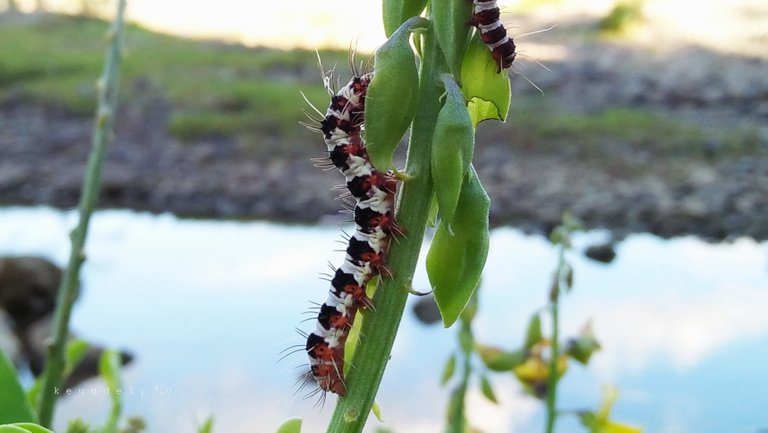
For official documents, a recent personal photo is usually required. That is because from time to time there are changes that occur even though sometimes we don't realize it. But even so, there are lingering parts of the past, from childhood, adolescence and beyond.
That is certainly about us.
As for this one, youth and juveniles are one thing, and maturity is something else. Very different. Apart from various matters concerning form, their work, for example, is also different from one another; as juveniles, they are feeders of the host's leaves, and when they mature, they are pollinators and assist the host in reproduction and survival.
When it is juvenile, it is difficult to predict what it will be like when it is mature, and conversely, when it is mature, it is also difficult to know what it actually looked like when it was juvenile. The difficulty is of course for those who are other than experts or people who observe it intensively. Like me, of course, who has no competence in this field.
But in recent months, I have tried to pay attention, albeit less intensively, to this fascinating youthfulness. My plan was that I wanted to collect photos of the larvae or caterpillars and wanted to know who these "teenagers" really were when they were adults. In particular, butterflies and moths. Consider it to increase my own knowledge about the environment around me.
So, so far, I have picked up a few of them, especially the ones I often encounter in the field. I also highlighted some of the host plants that some butterfly and moth species seem to use more commonly as comfortable places for them to carry out their life cycle. Where host plants grow, often near a body of water and away from human activity, I can guess they are there. This of course is about a case that I found and observed where I live in Aceh Besar, north Sumatra.
Well, I've started the first picture above with a rattlebox moth caterpillar, the Utetheisa ornatrix, hosted by the host, Crotalaria juncea (Crotalaria sp.). It was a plant that I found most frequently inhabited by both juveniles and mature ones.
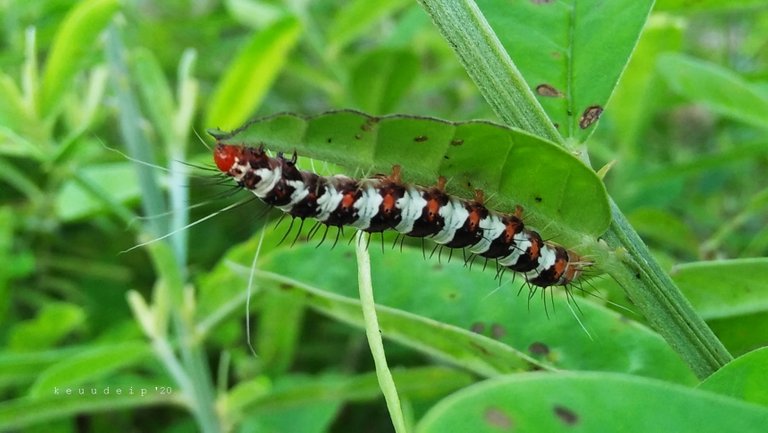
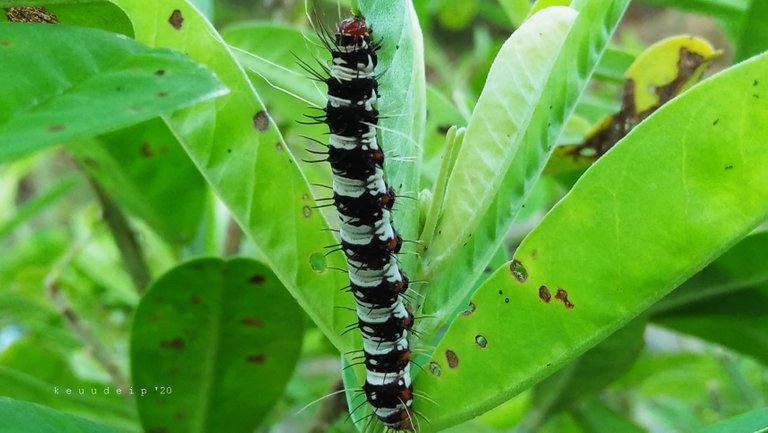

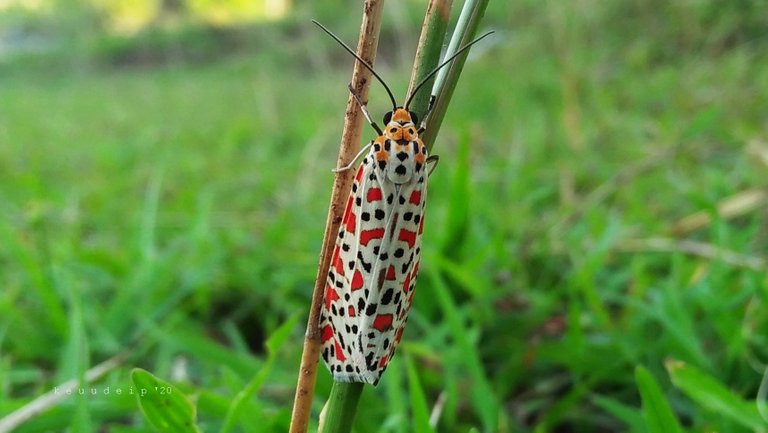
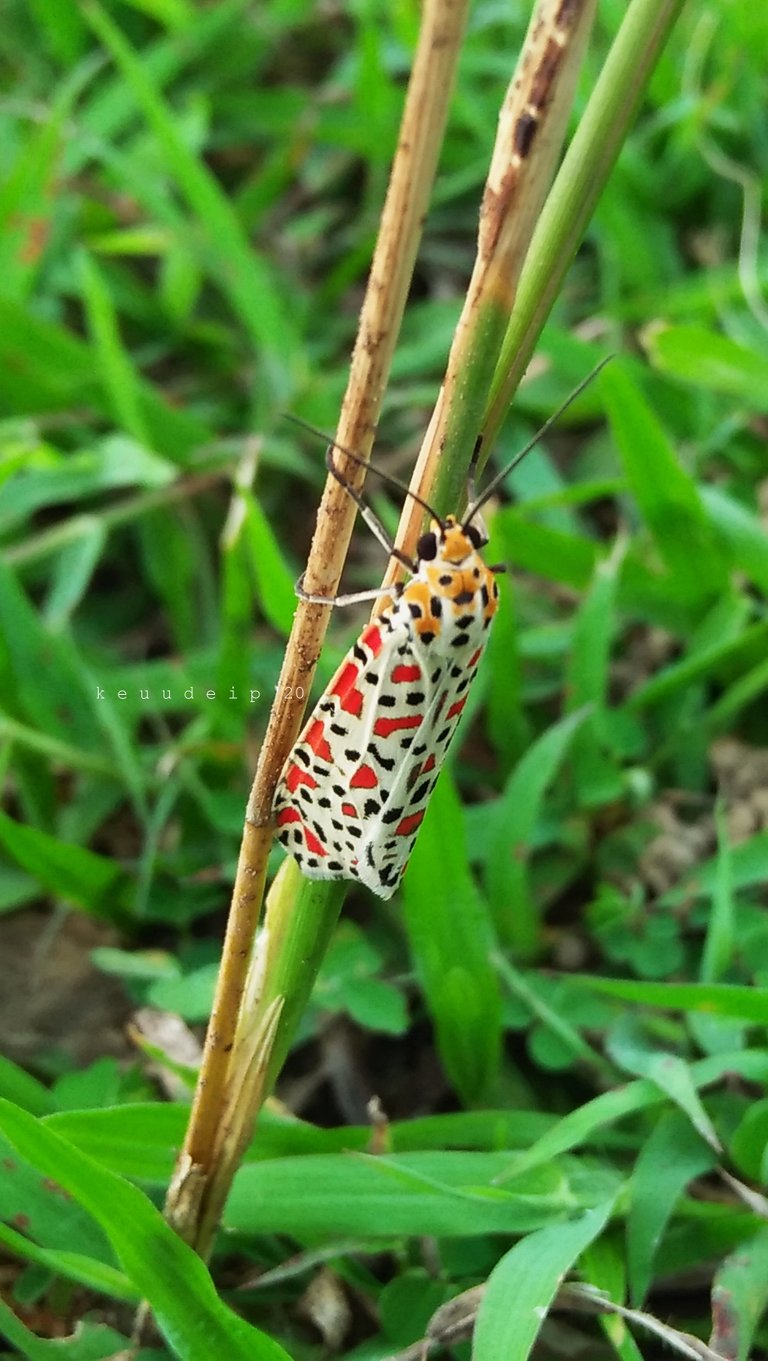
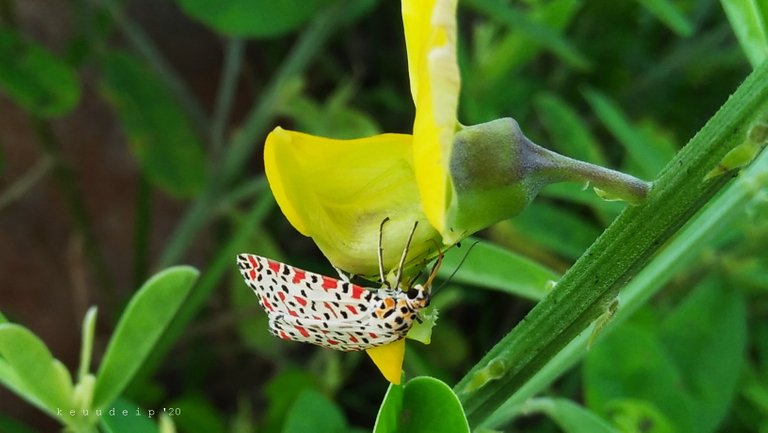
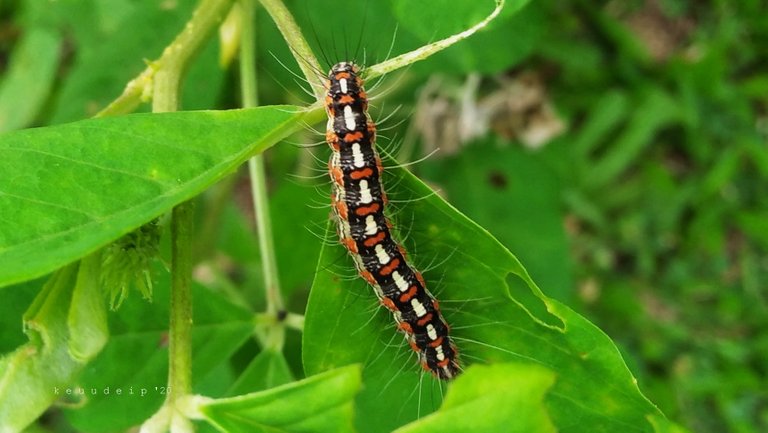
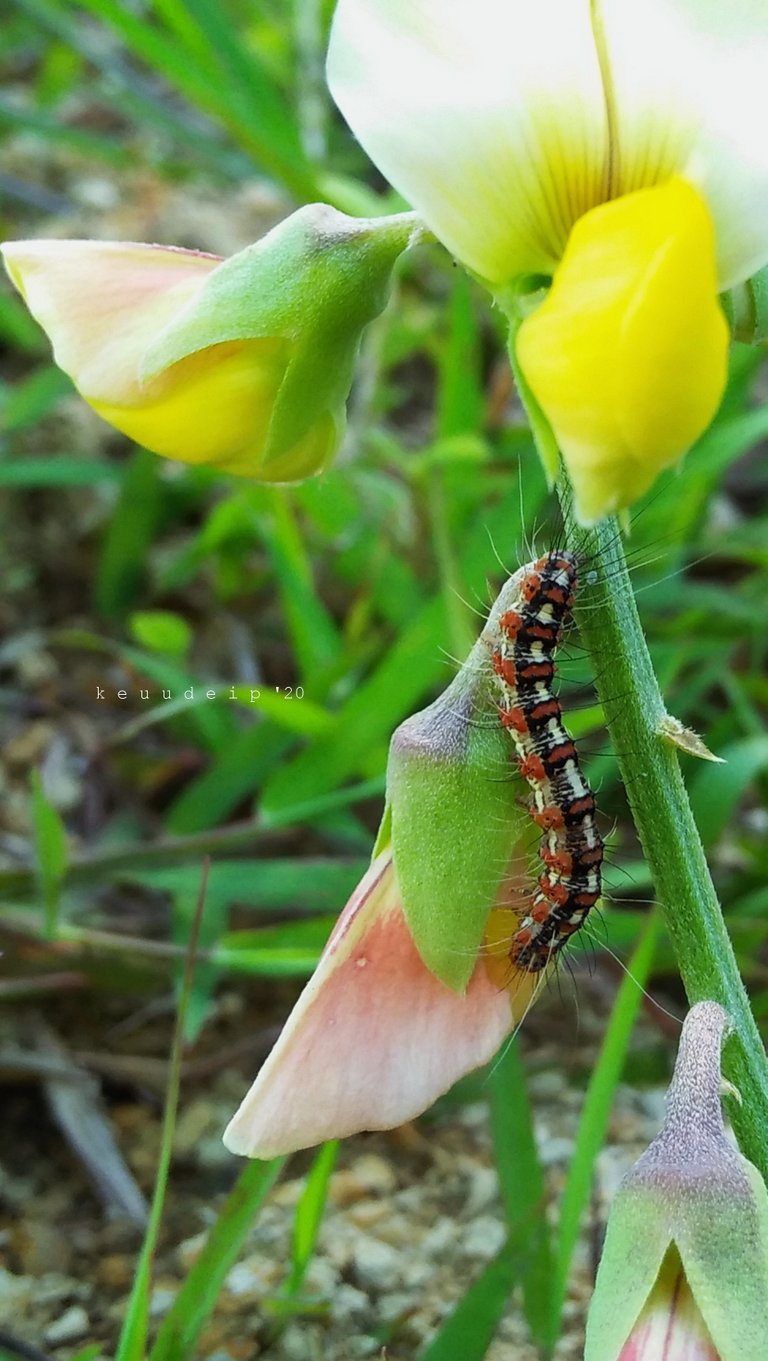
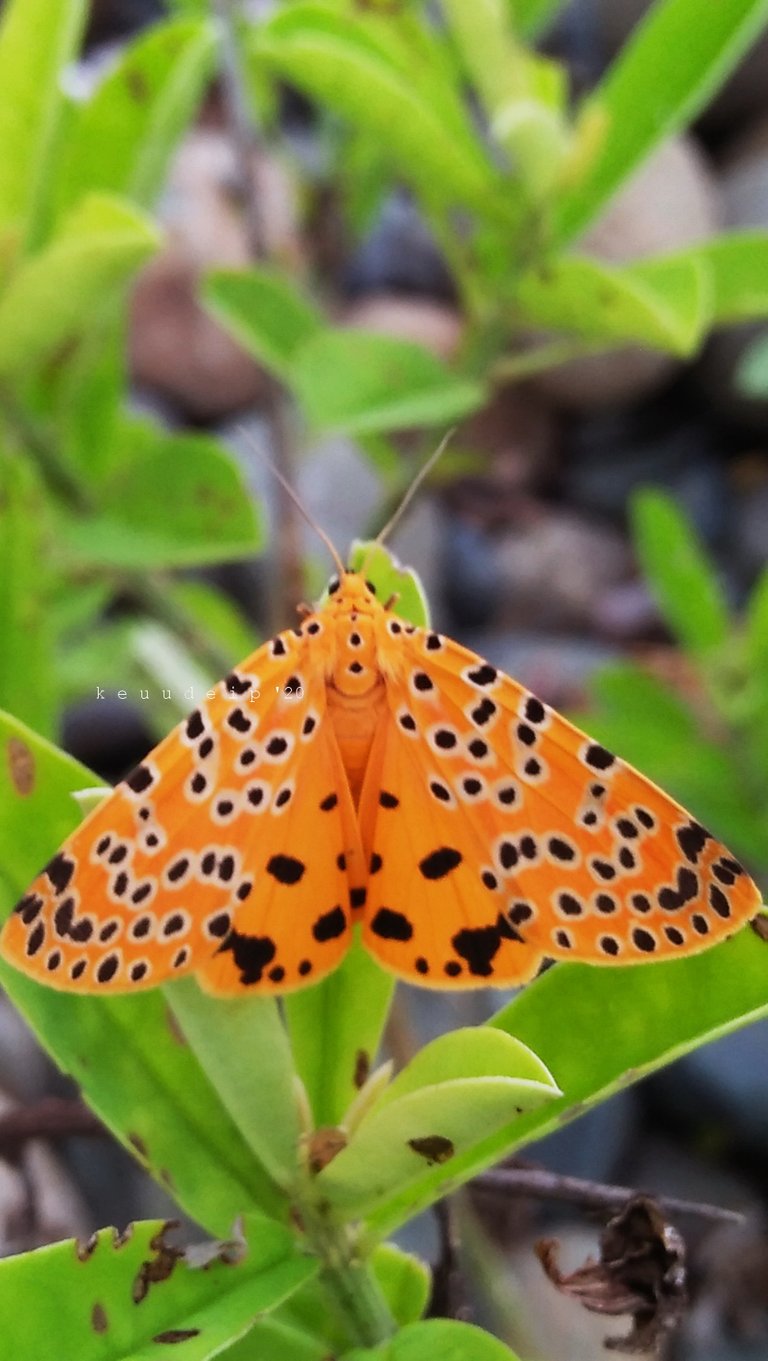
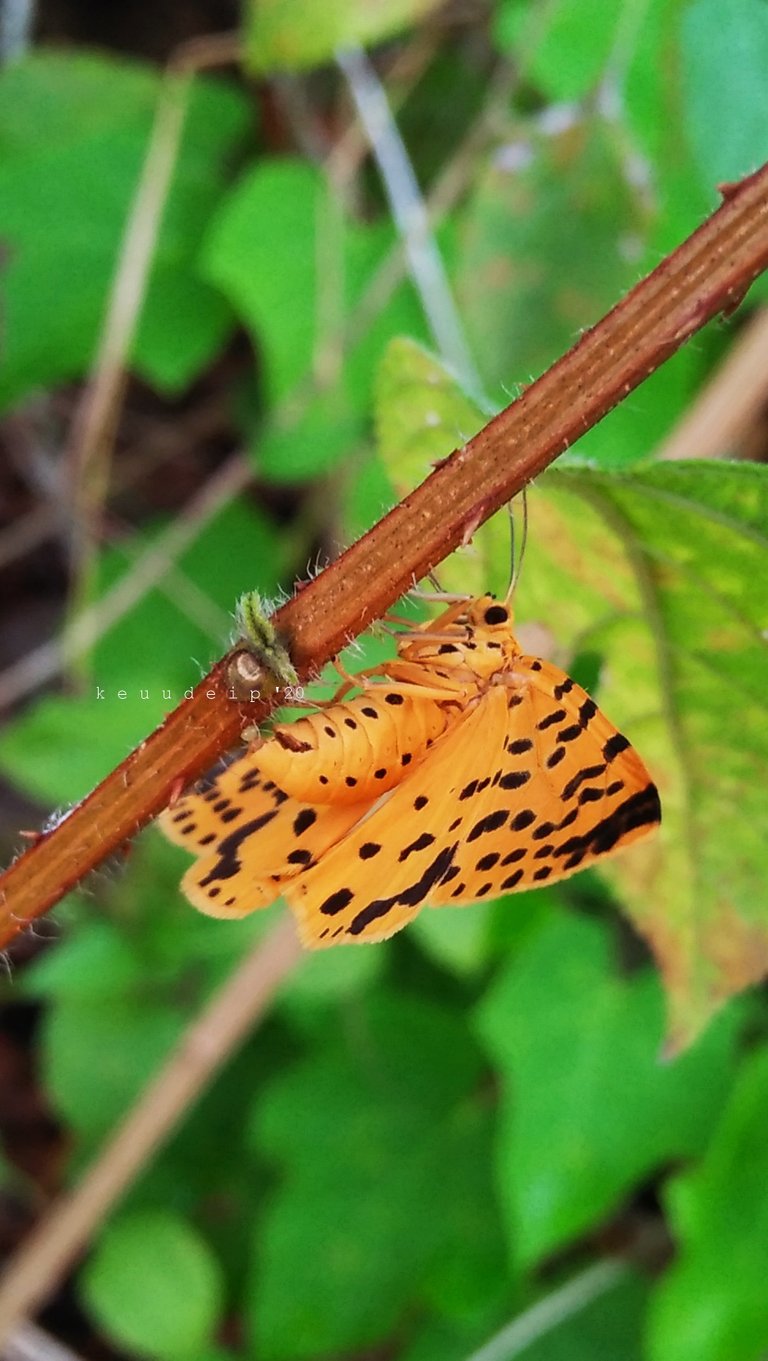
And here are the caterpillars and one cocoon of the plain tiger butterfly, namely Danaus chrysippus, and the blue tiger butterfly, namely, Tirumala limniace. I still find their larvae rare and not comparable to their adults that are so often seen.
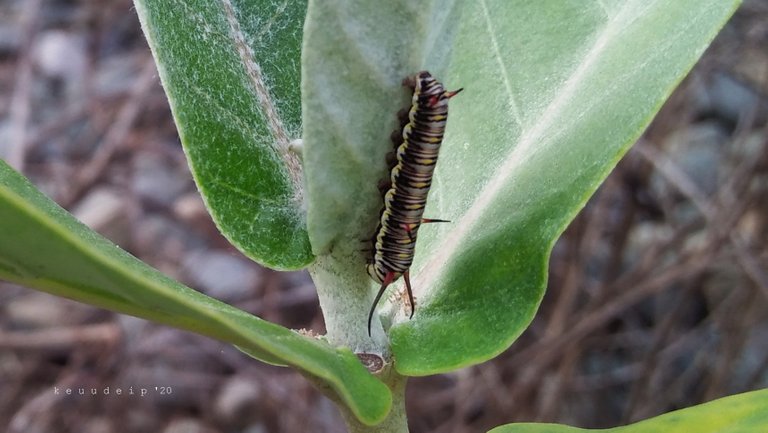
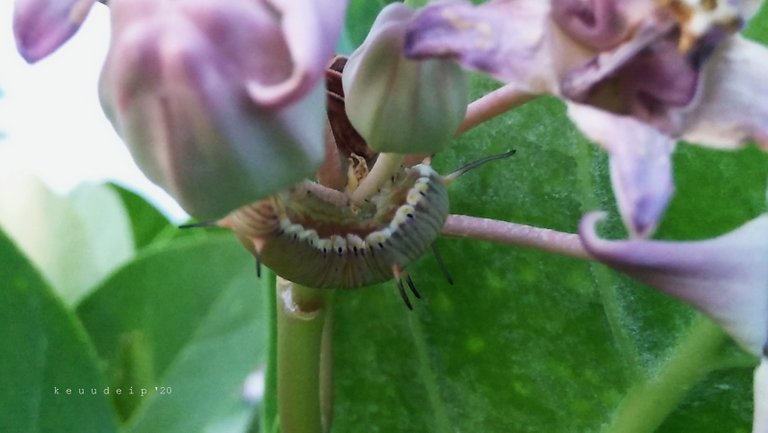
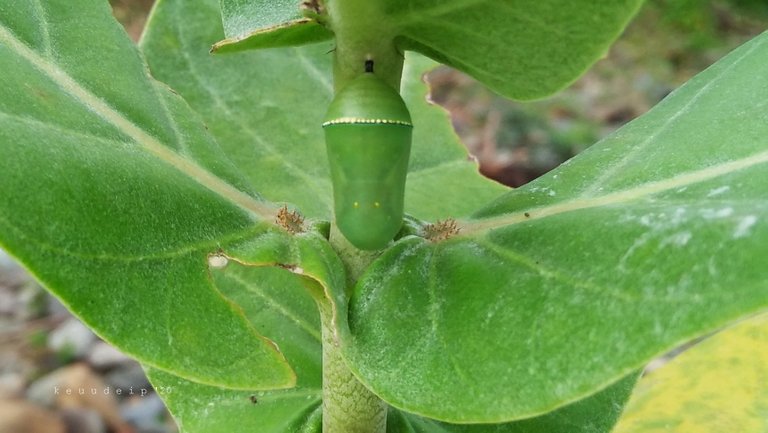
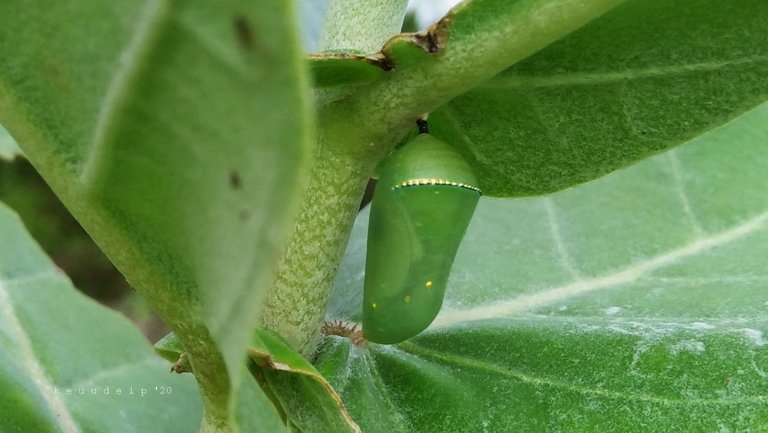

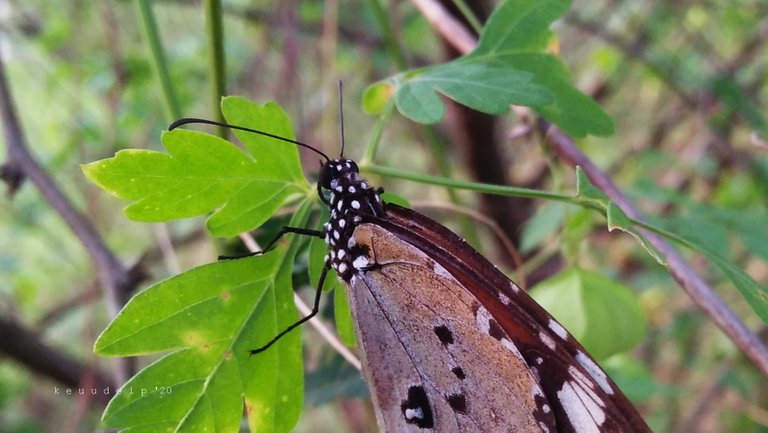
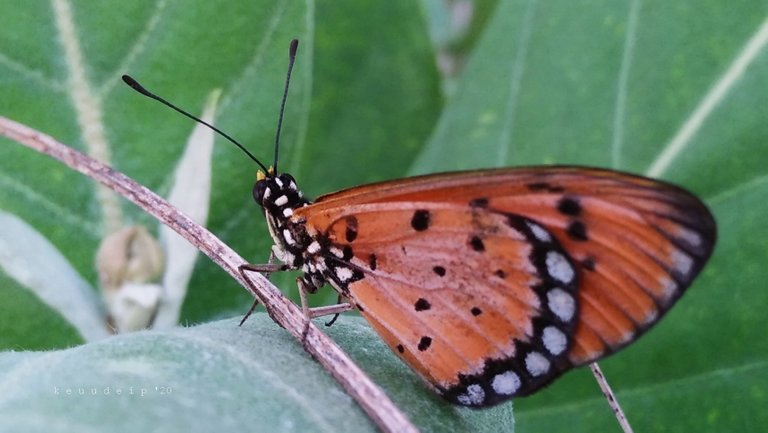
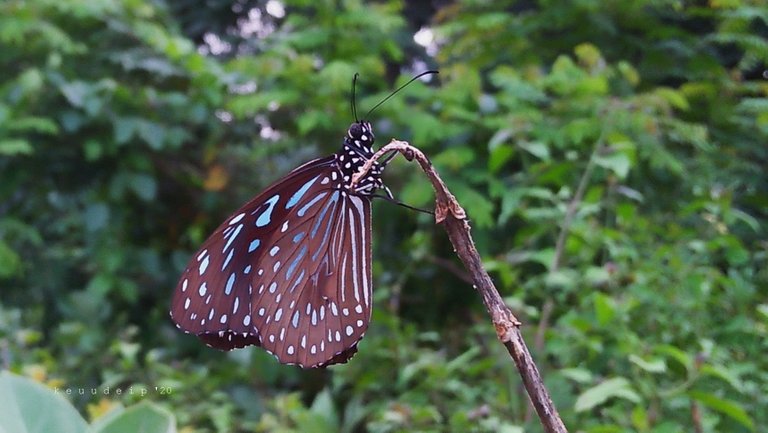
This one, I've only discovered it once, and I'm just trying to assume it has something to do with the blue tiger moth. It needs further discovery and observation, and I would love to have someone help me with an explanation of it.
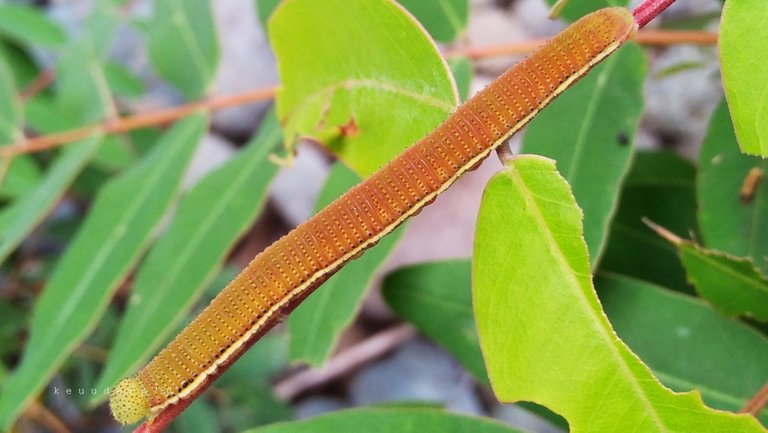
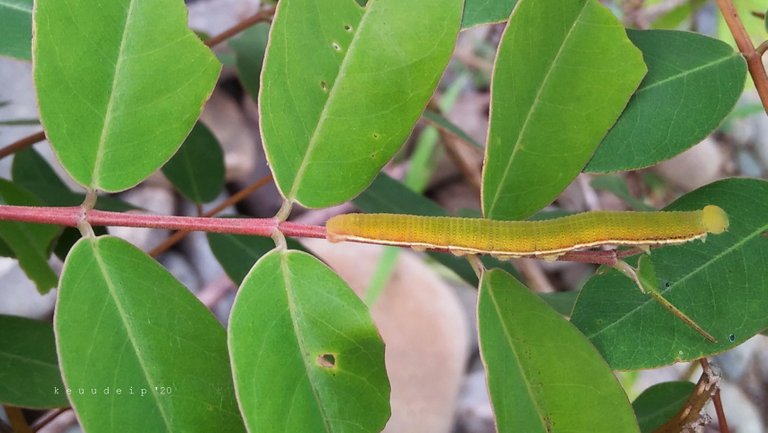
Likewise with this one. I can't yet guess what the adult looks like, but I did see a butterfly possibly from the genus Vanessa, hanging around where I took this photo of the larva.
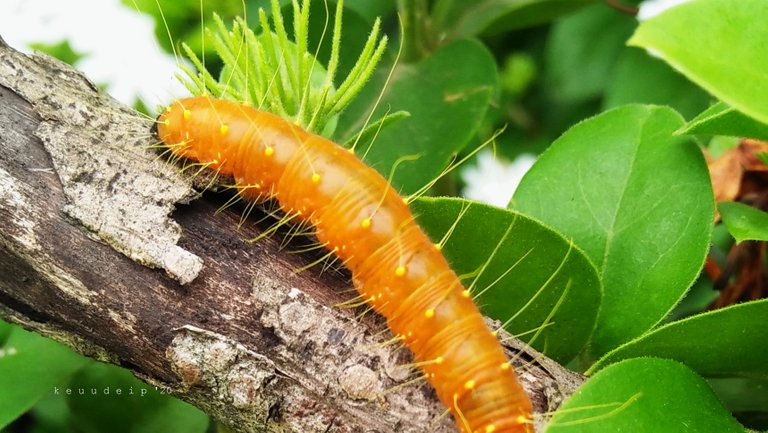
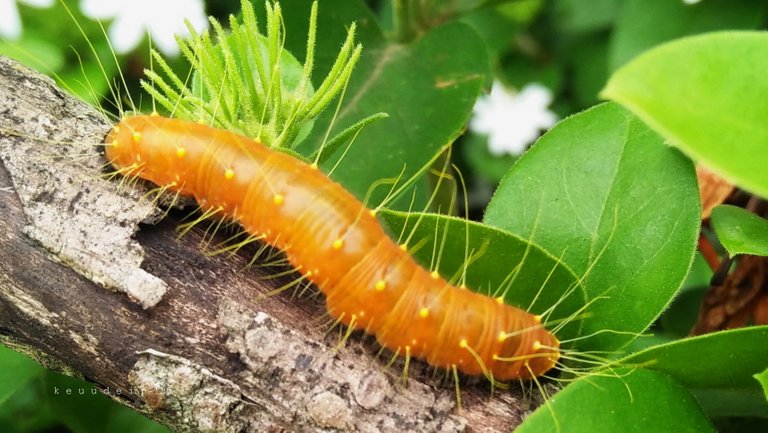
"My blog is my journal" (short notes containing experiences about various things).
Thank you for visiting.
Congratulations @keuudeip! You have completed the following achievement on the Hive blockchain and have been rewarded with new badge(s) :
You can view your badges on your board and compare yourself to others in the Ranking
If you no longer want to receive notifications, reply to this comment with the word
STOPDo not miss the last post from @hivebuzz:
Wow really amazing bro
Thanks a lot, bro!